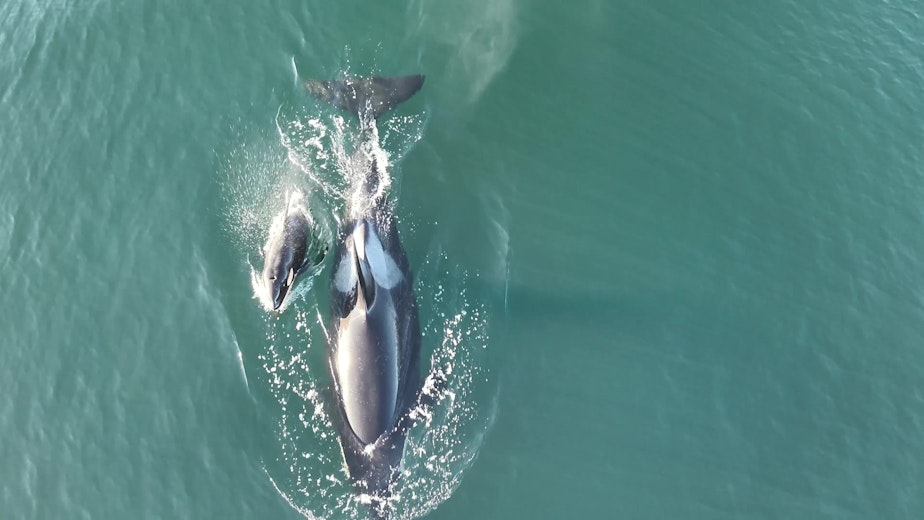Why the Salish Sea's new baby orca surprised researchers

Spotting a new orca calf in the Salish Sea is always exciting to whale watchers and researchers, but the most recent baby whale bouncing in the waters is particularly notable.
The female orca known as L90, who swims with the L-pod, is about 29 years old. Her parents and siblings have all passed away. She's had plenty of experience as an aunt, but she's never had a baby of her own before.
These orcas don't typically spend the summer in local waters, so it's not unusual for researchers to be unaware of pregnancies within the pods. But still, news of L90 becoming a mother is a bit of an "outlier," according to NOAA wildlife biologist Brad Hanson.
RELATED: Why are these killer whales increasingly showing up in the Salish Sea?
“We think that she had probably attempted to have a calf in the past, about 15 years ago," Hanson said. "She seemed to be in a distressed condition. She [had] never been seen with a live calf or even a dead neonate."
Sponsored
Hanson added that at her age, it's likely that L90 has been pregnant several times before but lost those calves.
"She's also a relatively small female. So to be honest, we had sort of written her off, if you will,” he said.
That was a mistake. The new mom was spotted with the new calf, adorably named L128, off the south end of Vancouver Island on Sept. 15. According to the Orca Behavior Institute, the pair was spotted again between Victoria, B.C., then in the San Juan Islands a day later.
A celebration erupted among orca watchers, who had mourned the loss of a southern resident orca calf born last year. That baby, a member of the J-pod, was presumed dead within the first months of its life. Orca calves face high mortality rates within their first six months.
"It does bring us hope, but you know, we're cautiously optimistic," Hanson said.
Sponsored
“The calf and the mom were interacting quite a bit, and it looked like the female was rolling over to try to allow for nursing," he added. "We also saw them in the kelp rolling around off of Stewart Island (in the San Juan Islands). The mom was pushing the calf around and whatnot, which was good to see them sort of playing ... those were really positive signs."
Whale watchers also saw L90 foraging and swimming with a fish in her mouth — all good signs that she's been eating.
RELATED: Shhh! The orcas can’t hear their dinner
“I guess what I find is exciting is that if she can do this, then basically any of the southern residents can do it," Hanson said. "And really, having calves is what is essentially moving us toward recovery in the population. So it's really exciting to see this, and we're hopeful that she'll be able to successfully rear the calf. She was certainly showing all of the signs that a good mother would.”


